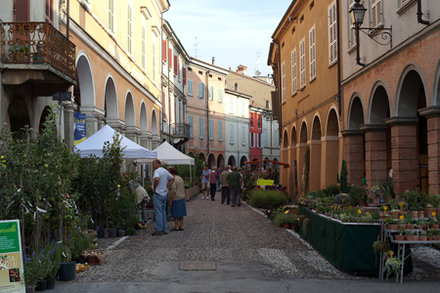
On the last Sunday of September, for many years now, I have had an important engagement with my Granny, Maria, one of the first women to get an MD in biology, in 1949, from Parma University. She is still very keen on botany and zoology, so I once again volunteer to go with her to have a look at a show called Rare and Lost Plants and Animals, that has been held in Guastalla every year for the last 16 years, at the end of September. On that day and for a day only, scenes of everyday life long since died out are suddenly revived, together with the taste of foods and products of yore.
We start roaming around: there are over 400 exhibitors of rare, endangered species and age-old arts and crafts that nobody can or wants to practise any longer. We take a look at the balètt, sieves used for cereal, fèr da sghèr, sickles, sgùrbie, pruning hooks. I confess that one of the initiatives that most arouse my curiosity is the so-called donkey-bus. How can it possibly work? And what about getting a donkey license? Who will “deserve” one? Granny would like to attend gardening lessons, despite the fact that she doesn’t need them, as she has a true green thumb when it comes to house plants: hers grow as big as baobabs! Anyway, I decide to please her. I shall have a look at more amusing initiatives later on. Among them are: a crowing competition open to all Italian cocks, a beauty contest for geese, Pretty Goose, a photo contest called Lights, camera, action! We’re braying. This initiative seems to me particularly nice, as it is a photographic competition open to all children. I cannot take part in it, of course, but I can take a picture!